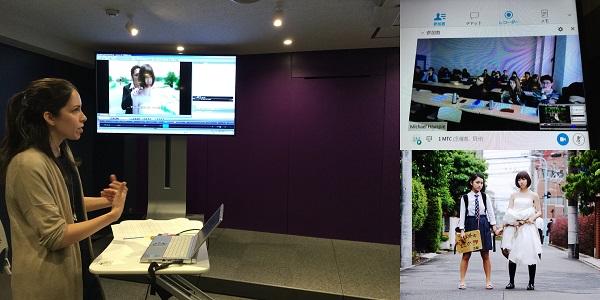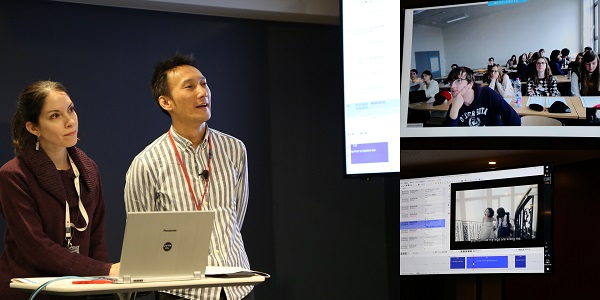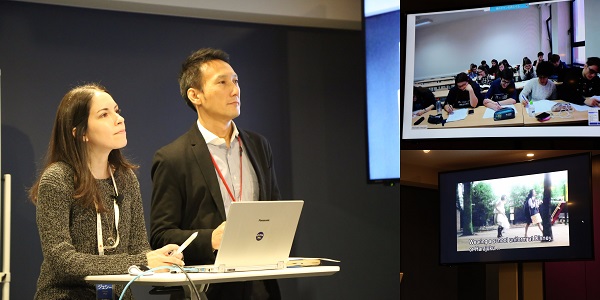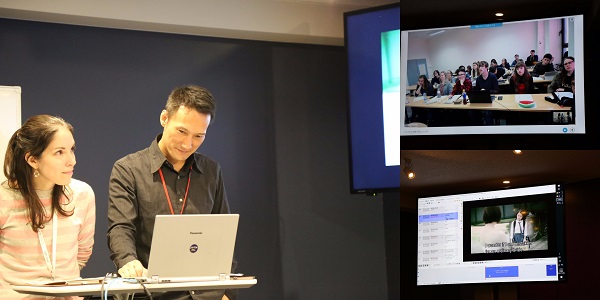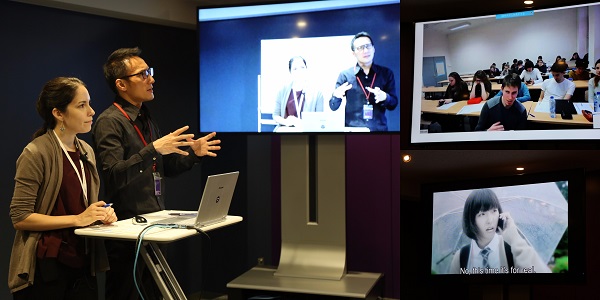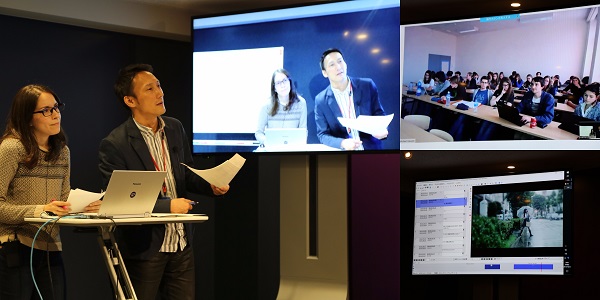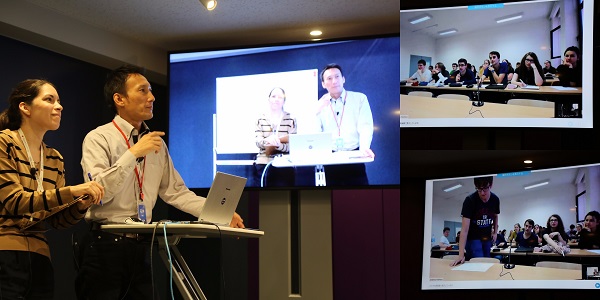第5講では今までの訳を基に、物語前半の字幕制作に取り組みます。
翻訳だけでなく、シーンの長さや改行位置、文字数制限も考えなくてはいけない字幕制作。前課題として初めて取り組んだ学生たちは皆、文字数を抑えることに苦労したそう。
特に大変だったのが、花嫁マキが女子高生ユリに自分の憧れを早口に語るシーン。「制服でスタバにも行きたいし、サーティワン(アイスクリーム)にも並びたい、コンビニの前でたむろもやってみたい」というセリフを字幕にするには、日本独特の若者文化や、お店の呼び方をうまく言い換える必要があります。さらに、シーンの長さが短いため、コンパクトな英語にまとめる必要があります。
学生たちはニュアンスを崩さずにルールに沿うためにはどうしたらいいのか意見を交換。字幕で伝えるためには、時に原文の情報を取捨選択し、制限の中で新たにセリフを作るクリエイティブさを持つことも重要だと学びました。
講義内では「(うどんは)いらない!」とユリが電話に向かってと言い放つシーンの字幕を“I don’t care!”と訳し、「登場人物の気持ちをうまく表現している」と講師らをうならせた一幕も。基本を学んできた学生たちのセンスが、字幕の端々で光り始めています。
For the fifth GUSP class, the students tried their best to create subtitles for the first half of the movie based on their translations up until now.
With subtitling, it isn’t only about communicating what is being said. A subtitler has to consider the content, length of the sentences and where to break them, and even character count restrictions. This time around, students were asked to modify their translations to fit within a specific character count. To their surprise, it was much more difficult compared to their previous task.
There was one scene in particular that seemed to give them a hard time. The scene shows the bride-to-be Maki talking about how she admires Yuri, and how she “wants to go to Starbucks, line up for Baskin Robbins, and hang out with friends in front of a convenient store, all in a high school uniform”. Maki is talking about a sort of “youth culture” common among Japanese students her age. Under strict character count restrictions, figuring out how to translate lines that include several pieces of information like this one turned out to be a challenge.
The students shared opinions and discussed how to convey the content while both abiding by the rules and maintaining important nuances. They learned the importance of being creative, especially since sometimes things need to be taken out or added in to the dialogue.
For instance, for the line where Yuri shouts “I don’t need any udon!” into the phone, some students thought that it would be more expressive by translating that to “I don’t care!”, a decision that made the instructors feel that the students are “expressing the feeling and emotions of the characters in the movie really well”.
Starting from just the basics, these students really have come a long way. Their skills and sense for translation have gradually improved, and we look forward to seeing them grow further throughout the course.

